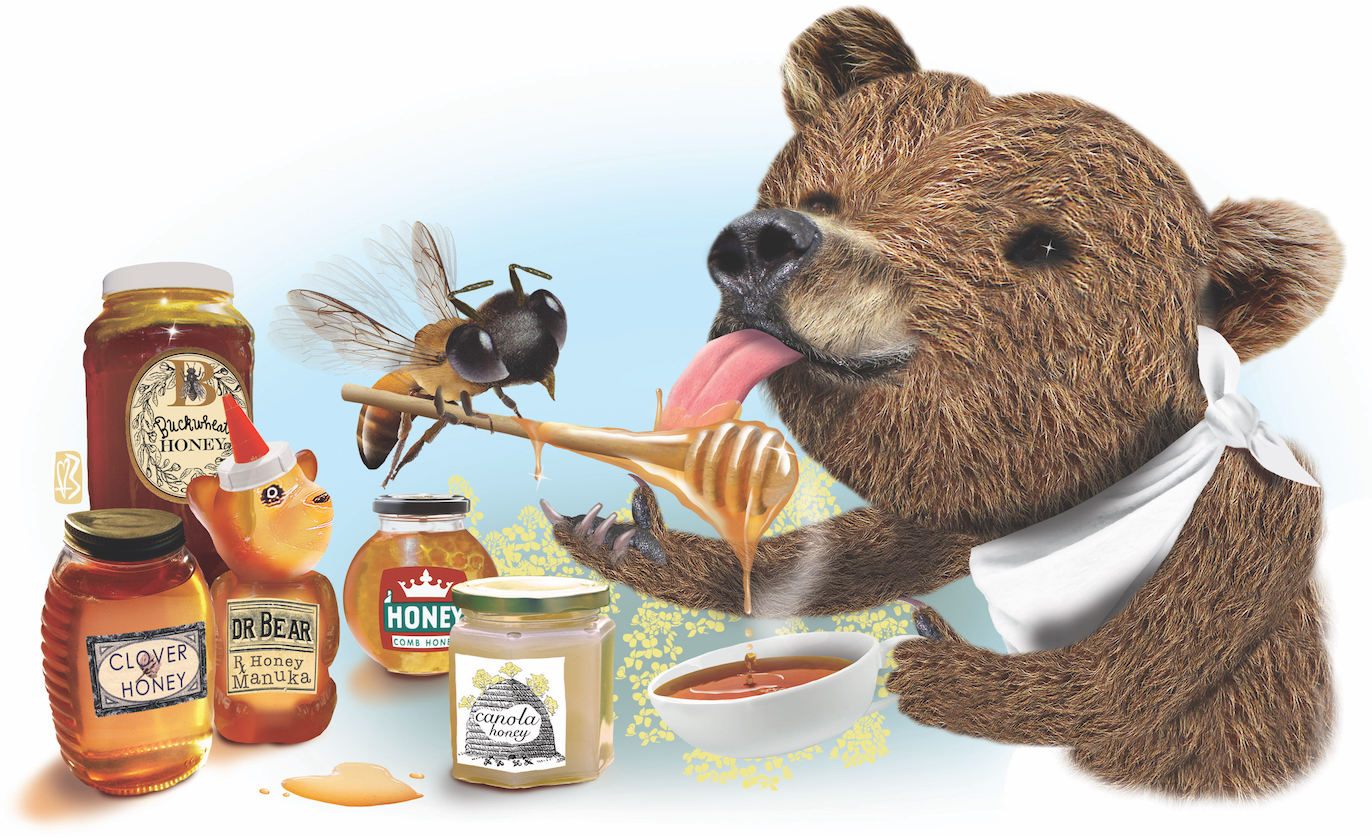On a typical spring day, Patty Milligan, a.k.a. Lola Canola, can be found covered in white from head to toe. Coveralls hide her arms and legs while a veil hangs from a large brimmed hat.
She holds what looks like a watering can with a short nozzle – but when she tips it, smoke comes out, not liquid. She squeezes the smoke into four large boxes before opening the lids and gathering her harvest.
Her bounty is spring honey. The smoke helps calm the bees so she can do her job. Judging from the abundance of yellow blooms nodding in the fields, dandelions are the primary pollen source, meaning this batch of honey will have a gold colour, along with a sharp tangy flavour and a creamy texture.
Milligan started beekeeping in 1989, when she bought 80 hives from a former employer. She’s since scaled back and kept only four, while shifting her focus to teaching beekeeping classes.
She also holds honey tastings at people’s homes, where she presents the spoonfuls of honey from western Canada and around the globe. But those flavours are increasingly local ones, as Alberta beekeepers have finally started producing specialized, single-flower honeys.
“Four years ago, you probably wouldn’t have found anyone producing any single-flower honey except me with my dandelion,” says Milligan. “Now I see other beekeepers with dandelion, as well as Coal Lake’s sunflower and Chinook Honey’s sweet clover. So I’m really certain we’ll see more kinds emerging.”
She says honey – especially in Alberta – is generally seen as a “generic product that’s simply pulled from the store shelf.” Often this honey is an unspecified combination of three main nectars (alfalfa, clover and canola), which further supports the misconception that all honey is the same. But when beekeepers start harvesting from specific flowers, there are changes to the flavours, colours and rates of crystallization.
“Recently, I’ve seen this light bulb go off in people’s head when you talk about the fact that honey reflects the nectar of the flowers,” says Milligan. In western Canada, and around the world, she has noticed a movement of people appreciating honey as a nuanced product, one as specialized and attention-worthy as chocolate or coffee.
